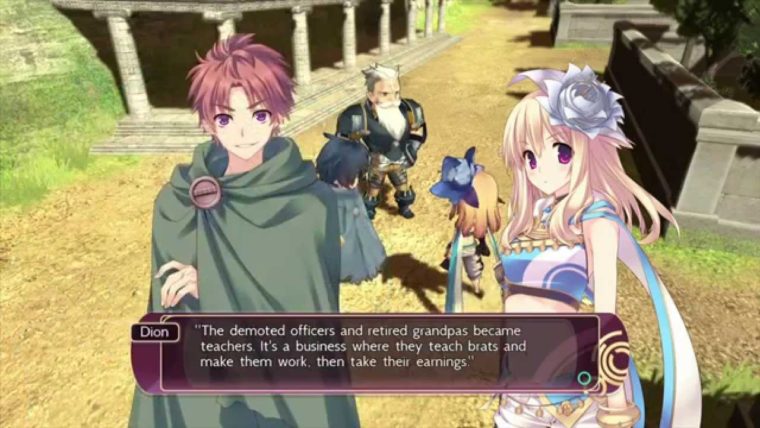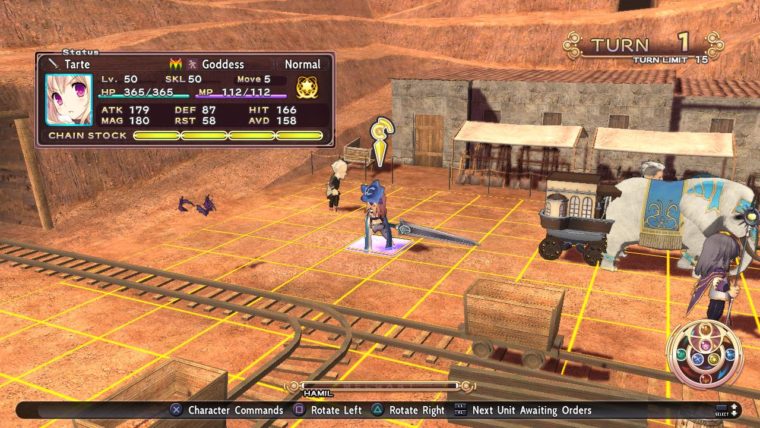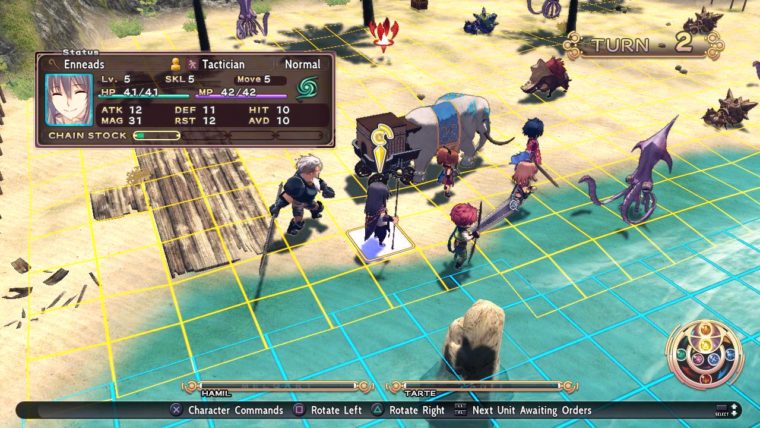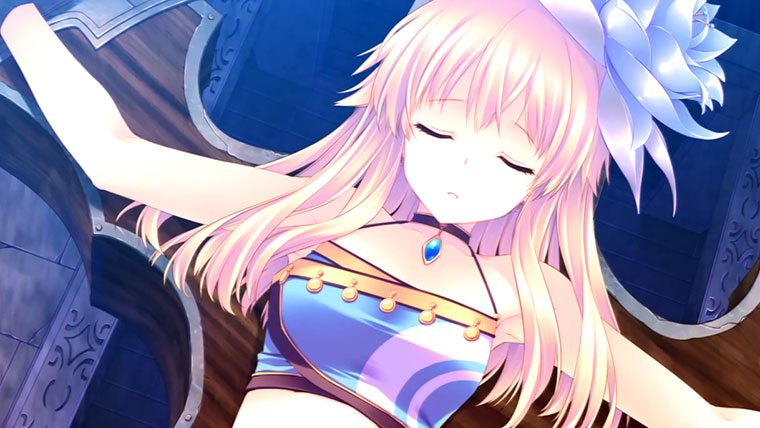Tears To Tiara may have never appeared in the west before now but that didn’t stop Atlus from deciding it was time that JRPG fans and strategy role playing fans experienced what the Asian market already had. They decided to start us off with Tears To Tiara II: Heir Of The Overlord which seems like an odd choice, but thankfully continuity is not a problem as it is a completely encapsulated story.
Tears To Tiara II offers a lengthy story that takes a while to get going and can be experienced in sections. Players will take on the role of Hamilcar, as he rises from a simple slave bearing noble blood to the leader of a resistance against the Divine Empire of Hispania. In true JRPG tradition, Hamilcar also has a few secrets up his sleeve and some ‘inner demons’ he has to work out. Accompanied by Tarte, a Goddess who helps him during his journey, along with various other characters such as the archer Dion, Monomachus an older, battle tested soldier and Enneads a wise mage. Together, they will attempt to overthrow the Divine Empire and restore Hamilcar to his rightful place as ruler of Hispania.

The game is split into two sections, as you progress it continuously rotates between two ways of experiencing the story. The first is a visual-novel experience where you hear the game’s original Japanese dialog and read along, and the second, which features battle sequences that progress the story forward. The game is very heavy on plot and becomes quite the reading exercise unless you are fluent in Japanese. This is where a complete localization with English voices would have come in handy, but sadly we are stuck with the hand we were dealt. If you are not prepared to experience thirty or more minutes of dialog filled scenes than Tears To Tiara II might already be too much for you. The battles feel few and far between at first, but once you make it past the first chapter the game opens up into a more adventure-like feel of traditional RPG’s, which makes for a much more fun experience.
The base menu and over world map serve as your preparation area for the adventure that lies ahead. Players are able to save, change options, and edit their party all from the base menu. Also they are able to freely move around the world via the ‘embark’ option, partaking in battles and attempting to level up their party. Once they are ready to progress with the story they can move on by returning to base and choosing ‘Council Of War’ in which a scene will take place to determine the resistance’s next move. Not only are players able to visit the tool (weapon) shop and market within their base, but they are also able to do so while exploring prior to a battle.This is a great mechanic as most other titles would limit your range of access to such shops.

Battles are a very technical aspect of many strategy RPG titles and Tears To Tiara II is no different as it gives the player a lot of choice and ways to approach a battle. Parties are limited to five characters so you will likely find yourself going over the same area again and again if you want to level up your entire party equally. Battles themselves are simple in the sense that you plan out the characters you wish to use and choose your leader then move them and attack based on their abilities. Mages and sorcerers tend to be weak but are diverse in elemental power and can attack from a fair distance away. Sword and spear wielding allies are able to attack from one to two positions away, but do the best damage in close combat situations. Finally there are the archers who attack best from afar and are weak in close combat situations. Large units require space to maneuver around and can usually only attack a target they are directly facing, using their head to counter incoming blows. The goal is to tactically utilize your allies’ strengths and the different facets of the battle mechanics available to you. As you continue to target your enemies with consecutive attacks ‘chain stocks’ will build up, which allow you to do special moves that can either consist of multiple hits with physical based allies or boosted magic for spells. It adds a ‘special meter’ in a sense to what is otherwise a fairly cut and dry strategy RPG but it isn’t a game-changer, as to really use the mechanic your enemies would have to survive for more than two direct hits, which they usually don’t.
One key aspect of the battle system is the elements and attributes affinity. The elements in the kingdom of Hispania are fairly simple with each being weaker or stronger than one another. Fire overpowers wind, and water overpowers fire and so forth. A diagram of sorts keeps track for players at all times during the battle for their symbols and what each one is weak against in a clockwise motion. It also rotates whichever element is currently set for affinity, which basically means if you choose an attack that utilizes the glowing element it will do significantly more damage this turn. Elements add a simple aspect that brings more diversity to battles beyond simply attacking with your stronger characters. It also encourages varied use of your allies as well as meticulous and thought out use of your mage.

Leaders are apparent on both sides of the battlefield; yours can be chosen when you begin the battle whereas the enemy’s is pre-determined. Each character in your party has their own ‘leader skill’ which ranges from healing party members in their vicinity, to additional experience for nearby allies and even increased damage to those around them. It varies from character to character but as long as that character is alive for both the enemy and your allies, it will be in effect. In some story battles, taking out the leader will also end the battle. The leader skill system is an interesting concept but it fails to really make a major impact on the game. In fact, it can usually be ignored and you can simply play with your favorite character as the leader.
The rewind system on the other hand is a unique and compelling addition to an otherwise tactical battle system. It allows the player to rewind to the previous turn if they see fit, undoing everything up until the selected turn. It is a very interesting addition to a strategy RPG, giving the player the ability to undo their past moves to see if they can do anything differently in order to alter the outcome. Players are able to rewind as many times as necessary, but you will have to play the rest of the battle from that turn as you cannot fast forward ahead to where you previously were. Moreover if the player constantly attempts an attack from, for instance, the enemy’s left and misses they cannot retry it from the same location and expect a different outcome. Essentially the rewind is best used if a party member of yours is downed, and you wish to rewind and get your ally out of harm’s way, defend them or take out the enemy who originally killed them.
Battle maps also have various objects ranging from treasure chests that can be attacked to gain their rewards, to traps that can be utilized so that enemies come into contact with them, instead of your allies. Larger allies’ movements are not hindered by traps but they still take damage, so if you have a strong, larger ally it may be smart to push them through a trap to deactivate it. Your companion elephant, Noa is always on the battlefield pulling a quadriga, which contains party members who weren’t deployed. This is the only way to switch out characters during battle. In order to do so you have to have a unit approach the quadriga and interact with it to either switch leaders, or switch out a new unit. The quadriga can still be destroyed and thus the player would lose access to their reserve units. This adds a sort of mobile command center type of feel to the element and the accompanying quadriga. Certain characters also ride the elephant and other monsters that you develop a relationship with throughout the course of the game. When doing so, the HP and MP of both allies are combined and the best of the stats are used, which essentially creates a more powerful ‘tank’ like character. However, if you die during this partnership the rider will remain but the monster will lose trust in the rider. So it is best to be smart when utilizing Noa and other monsters.

The Verdict
Tears To Tiara II: Heir Of The Overlord is not a bad game by any means but it does take a lot to get going. If you manage to stick past the very long and seemingly overtly drawn out first chapter you will be rewarded with a fun battle system that makes many interesting choices to add a fresh feel to what is usually a very basic genre full of dated mechanics. Thankfully, the music, the art and the battles will be enjoyable for fans of the genre. It would have been better had more time been taken with the localization though. English voices would have allowed players to better appreciate the rich story, rather than having to read time and time again. Still, it is an enjoyable first effort for the franchise in its attempt to reach a western audience.











Published: Oct 15, 2014 01:43 pm